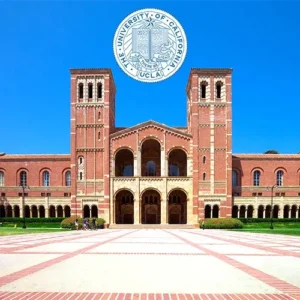Table of Contents
What is Magna Cum Laude GPA?
Magna cum laude is a prestigious academic distinction awarded to students who achieve a GPA between roughly 3.7 and 3.9 out of a possible 4.0, signifying “with great praise” in Latin. This recognition places them near the top of their class in terms of academic performance.
In the U.S. universities commonly distinguish outstanding academic achievements with three levels of honors. The first level, cum laude, or “with distinction,” covers GPAs from about 3.5 to 3.7. The next level up, magna cum laude, translates to “with great praise,” and is for students scoring between 3.7 and 3.9. The highest honor, summa cum laude, or “with highest distinction,” is reserved for students who surpass a 3.9 GPA.
Some universities award these honors based on a student’s standing within their graduating class. For instance, being in the top 3% might secure a magna cum laude honor for a student, depending on the institution’s specific criteria.
| Honor | Meaning | GPA Range | Class Standing |
| Cum Laude | “With Distinction” | 3.5 – 3.7 | Top 10% – 15% |
| Magna Cum Laude | “With Great Praise” | 3.7 – 3.9 | Top 5% – 10% |
| Summa Cum Laude | “With Highest Distinction” | Above 3.9 | Top 1% – 3% |
These ranges are general approximations and can vary depending on the policies of each university.
Additionally, some universities may not use GPA exclusively but also consider other factors like the rigor of courses taken or major-specific criteria.
Key Takeaways
- Magna cum laude is a prestigious title given to students for outstanding academic success.
- Each school sets its own criteria for this honor, there is no universal standard.
- The tradition of awarding honors degrees began at Harvard University in the mid-19th century and has become widespread globally.
- Some universities, such as Stanford, do not use Latin honors and instead recognize top students with the term “distinction.”
Understanding Magna Cum Laude
Latin honors, retaining their original Latin names are commonly awarded in U.S. colleges and universities, though not universally. Many high schools also recognize students with these honors.
Magna cum laude translates to “with great praise” and is bestowed upon students demonstrating significant academic excellence. It ranks above cum laude but below summa cum laude in terms of prestige. Each institution sets its own criteria for earning these distinctions.
Latin honors are typically associated with bachelor’s degrees. Honorees may wear special stoles or other distinctive symbols during graduation ceremonies. Additionally, these honors are mentioned alongside the graduates’ names as they are announced and are included in the official transcript.
Requirements
Magna cum laude is awarded to students who achieve notably high academic results, though not the highest possible, according to the institution’s specific standards. Criteria for this honor can include a combination of GPA, class ranking, completed coursework and departmental recommendations.
| Criteria | Description |
| GPA | High GPA, typically ranging from 3.7 to 3.9 on a 4.0 scale. |
| Class Ranking | Top percentage of the graduating class, often within the top 5% to 10%. |
| Completed Coursework | Completion of specified advanced or honors courses or a certain number of credit hours. |
| Departmental Recommendations | Positive endorsements from academic departments or faculty members, acknowledging outstanding academic performance and contributions. |
Please note that these are general criteria and the specific requirements for Magna cum laude can vary significantly between institutions. Each university may have its own unique combination and weightings of these criteria.
“Some colleges award Latin honors to a percentage of the graduating class, which means that the exact grade point averages earned vary year over year.”
Understanding Magna Cum Laude GPA: Examples
The requirements for earning magna cum laude honors can vary significantly between academic institutions and even among different programs within the same institution.
Texas A&M University

At Texas A&M University, students aiming for magna cum laude distinction must complete a minimum of 60 credit hours while maintaining a GPA within the range of 3.70 to 3.899.
University of California, Los Angeles (UCLA)

For UCLA’s Samueli School of Engineering, the GPA requirements for magna cum laude can fluctuate annually. For instance, students graduating magna cum laude in engineering must rank within the top 5% to 10% of their class after completing 90 credits. In the academic year 2022–2023, this translated to a required GPA of 3.898, while for 2023-2024, the threshold increased to 3.934.
Harvard’s Criteria

Harvard University, the originator of Latin honors in the mid-19th century, offers magna cum laude distinction to undergraduates with an overall GPA in the top 20% of all graduates. The summa cum laude honor is reserved for students with the highest GPAs.
Brown University

Brown University, another Ivy League institution, employs a unique approach. It doesn’t rely on GPA for Latin honors. Instead, students are eligible for one honor, magna cum laude, based on the percentage of A grades and S for distinction marks earned in courses. However, no more than 20% of the graduating class can receive this honor.
Additional Factors Considered
In addition to GPA, colleges may take into account various factors when determining magna cum laude status. For instance, some institutions may require students to complete an honors thesis or earn recommendations from faculty members attesting to their exceptional academic performance. Completing a certain number of advanced courses may also be a stipulated requirement for eligibility.
Schools without Magna Cum Laude
Certain colleges, like Stanford University, opt out of the traditional Latin honors system. Instead, Stanford awards a single distinction called “with distinction” to the top 15% of students in each graduating class based on their GPA.
“Some schools have used other names, such as “with distinction,” instead of traditional Latin phrases.”
The Value of a Magna Cum Laude Degree
Determining the exact value of a magna cum laude degree or any Latin honor in the job market can be tricky. While some employers may place significant importance on these distinctions, others may not consider them at all. However, for recent college graduates entering the job market having a Latin honor on their resume can certainly be advantageous.
These honors hold particular value for students applying to graduate school. Top-tier programs such as law schools, often expect applicants to have impressive undergraduate GPAs, which are frequently accompanied by Latin honors. Therefore, earning magna cum laude distinction can enhance a student’s competitiveness when vying for coveted spots in graduate programs.
FAQs
What Grades are Needed for Magna Cum Laude?
The GPA requirements for earning magna cum laude honors vary by university. For instance, you need a GPA of at least 3.6 at the University of Pennsylvania, while Ohio State University’s College of Arts and Sciences sets the threshold at 3.7. Keep in mind that these standards can change and may vary across different programs within the same school. Additionally, some schools also look at other factors like the number of credits completed or faculty recommendations and some award Latin honors based on class rank.
Is Magna Cum Laude the Highest Academic Honor?
No, magna cum laude isn’t the highest academic distinction. In institutions that award Latin honors the highest is summa cum laude, followed by magna cum laude, and then cum laude.
Which is Higher: Summa Cum Laude or Magna Cum Laude?
Summa cum laude ranks higher than magna cum laude and is typically awarded to the top echelon of graduates, such as the leading 5% at New York University, compared to the next 10% who receive magna cum laude.









